Newsletter: November, 2017
International Survivors of Suicide Loss Day was created in 1999, and has been supported and sponsored by the American Foundation for Suicide Prevention(AFSP). It takes place every year on the Saturday before American Thanksgiving. This year 18th November was recognized as International Survivors of Suicide Loss Day and this year, SLW in collaboration with Mithibai College of Commerce and Arts, organized an event to commemorate this occasion. Around 90 individuals and families came together to observe the occasion of International Survivors of Suicide Loss Day at our event held at Mithibai College of Arts in Vile Parle, Mumbai on 18th November, 2017 followed by an awareness session on 19th November, 2017 with a few more survivors and supporters of our cause.
INTERNATIONAL SURVIVORS OF SUICIDE LOSS DAY
NOVEMBER 18, 2017
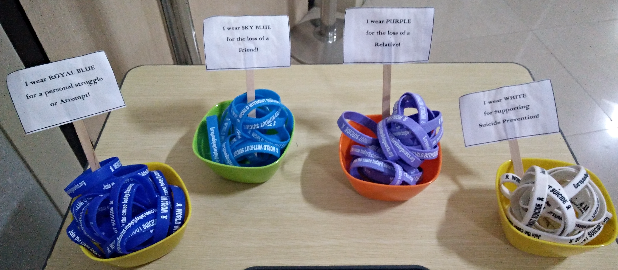
Dr. Greeshma Shenoy welcomed the audience and speakers:
Dr. Harish Shetty (Psychiatrist) and Dr. Kanan Khatau Chikal (Motivational speaker,
Psychologist, & homeopathic doctor).
Following the welcome note, the event began with a screening of The Journey, a documentary by the AFSP, which showcases interviews of families whose lives have been touched by suicide loss.
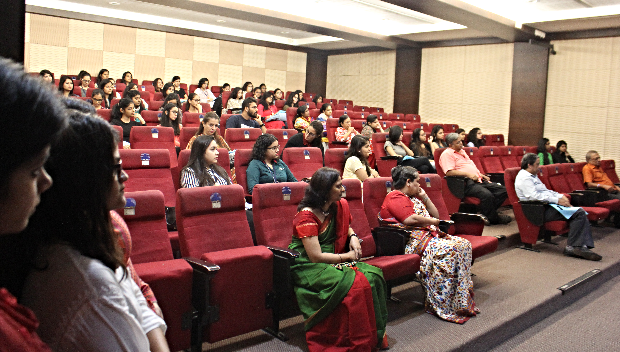
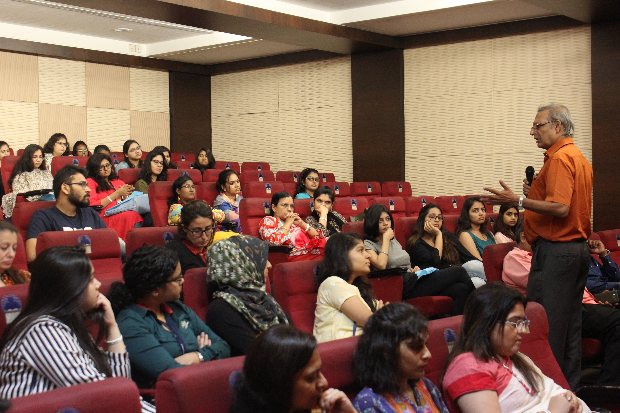
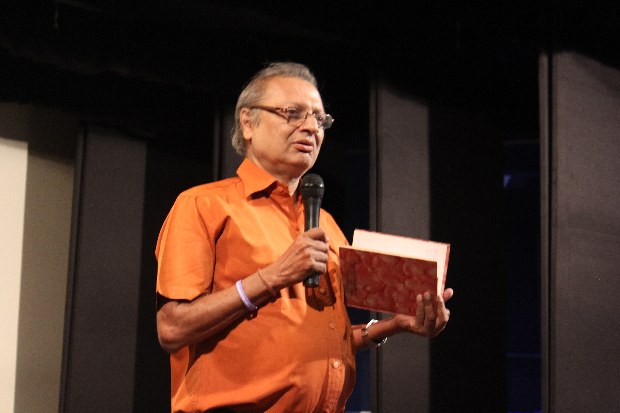
Mr. Mahesh Poddar, a survivor who lost his daughter to suicide, shared his experience on coming to terms with the loss. He spoke about his daughter and the various circumstances that led her to take her own life. “Despite scoring above 90 % , in her own mind, she had not crossed the bar of good marks in college.”
He expressed regret over not being able to recognize signs of suicidal behaviour and depression in his daughter. Mr. Poddar stressed the importance of recognizing such signs, so that professional help can be provided at the earliest and lives can be saved. Some signs he mentioned were as follows:
– Just before her suicide, she drew her hand out in the morning and said “Papa, look at my hand, my lifeline is over, it’s very short.” Mr. Poddar dismissed it as nonsense and asked her to go play. But this was a big suicide statement which showed the state of her mind of his daughter, which he admitted that he missed out.
– Daughter had drastically reduced her eating.
– Daughter’s sleeping habits had changed. Even at 2 – 3 a.m. she would be awake, her lights would be still on.
– Sadness on her face during the daytime, she would not like to play outside with her friends, she stopped watching TV.
“She was in her own shell, she imprisoned herself in her own shell, and would not come out”, Mr. Poddar said as he described his daughter’s pain. He shared how he felt when the suicide had taken place: “When the suicide happened, the world had collapsed on me. In that moment, I also thought
that why am I living, why am I not committing suicide too. My family and friends were there for support so they helped me get out of this. But I cried a lot. For days together. My brother was with me all the time, he held my hand and told me not to cry, and that we will face this together. My family was always there to support me. But the grief was immense, I cannot put it in words.”
Mr. Poddar spoke about how “Why suicide?” is such a looming question that disturbs every
survivor. He shared:
“Till date, I ask myself “Why suicide? Can anyone tell me why I have lost my daughter? I’m sorry to say but I could not find any reason for why this happened. The signs were there which I missed out but what’s the basic reason, I still don’t know. Dr. Shetty then told me that what has happened, has happened. The accident has happened. Once a bone is broken, it is broken. All we can do is help fix it. Forget how it happened or why it happened.”
Mr. Poddar and his wife then took some steps to help with their healing process. He shared the following:
– Conducted funeral rituals. This helped him because it felt like he was able to do something for the departed soul.
– Feeding someone – a person on the street, or any animal like a cow for 5-6 days, as per certain Hindu rituals. By doing this, he felt that he could connect with the departed soul.
– Taking the spiritual path. He read the Gita which gave him a lot of insights on life and to understand God’s ways.
– Adopting a child. Mr. Poddar shared, “My wife and I lost everything. Even though we were in the child-bearing age, we thought why not help someone else. We adopted a son. We visited an orphanage, and even today we keep visiting that place to see children play. This helped to lessen our grief. There was nothing left in our life but we wanted to give someone else a good life. Our son has just passed 10th grade and we feel blessed to have him in our lives.”
– Meeting Dr. Shetty.
Mr. Mahesh confided in the audience that when he visited Dr. Shetty for therapy, he had a lot of anger in his mind because suicide does not match with his value system and the Hindu culture. As a result, he developed psoriasis. Dr. Shetty explained that his condition was arising due to pent up emotions like anger. He suggested Mr. Poddar to join him to go to colleges and schools to conduct workshops on suicide prevention.
– Visit other parents who have lost their children to suicide.
Mr. Poddar shared about how he, Dr. Shetty and another gentleman made a group of survivors and organized sharing sessions. “These sessions give me some wound-to-wound contact – that really helps.
A couple of powerful statements that Mr. Poddar shared:
- “I don’t want you all to be sad about suicide, what I want is to talk about what we can do about it, what action we can take.”
- “Suicide is preventable if the person’s family, neighbor, friend, relative can catch the signs that are given out.”
A couple of audience members asked Mr. Poddar some questions too. One audience member asked how his coping was different from his wife’s coping. He stated that he had already explained how he had coped. Mr. Mahesh further added that emotionally he considers himself to be very weak but his wife is much stronger. “I used to cry in public, among friends, when someone would ask me about my daughter. But my wife would not cry in public. Maybe in the bathroom, but then she would be ok outside. Initially, my wife had lost her confidence. She would make sure that I was always around for any task. She never wanted to be alone. Not cooking alone, not going to the bathroom alone. But when this child came to our house, we got engrossed in bringing him up. Slowly she joined a school as a teacher for nursery students. She got involved with kids and that’s how she coped.”
One participant asked Mr. Poddar if he sees himself forgiving his daughter since there is so much anger within him. He said that he definitely has forgiven her. Mr. Poddar stated, “A similar question was asked to me in another session and Dr. Shetty asked me that if my daughter comes in front of me now what would I do. I said I would give her a good slap and then hug her. So there is anger that’s still with me, but maybe with time it will heal and get better.”
The panel of professionals from the mental health field included Dr. Harish Shetty and Dr. Kanan Khatau Chikal. They addressed the audience regarding topics like emotions that arise from loss, processing these emotions like grief, anger, and guilt, and ultimately healing.
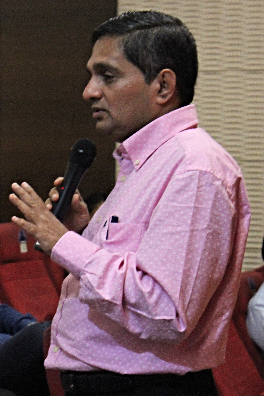
Dr. Harish Shetty enlightened the audience about the various struggles that surviving families go through after a loss to suicide. These include:
– anger towards the loved one who took their life
– guilt regarding not having done anything to save their life or to recognize the signs
– the grief leads families to approach quasi mental health professionals like astrologers and they get exploited
– the dilemma of living in the same house or place where the suicide happened
– the painful, haunting question of “why did he/she do it?”
Dr. Shetty said that it’s important to help the survivors to share details about their loved one, especially all the good memories. He also spoke about different activities and beliefs that individuals could adopt to help themselves heal after a loss of this nature. These included:
– Having open conversations with other family members about the loss. He gave an example of a family who would not eat together after the incident because they would start crying. Dr. Shetty mentioned that a lot of people avoid talking about the loss, they keep quiet about it, which is dangerous. So helping each other to talk about the person and his/her life, and not necessarily about the suicide, can help them to heal.
– Revisiting the place where the incident happened and processing their emotions
– Turning to spirituality, visiting a spiritual place to do the last rites
– Reaching out to other loss survivors to understand that people are not alone and to gain support from other individuals in a similar position.
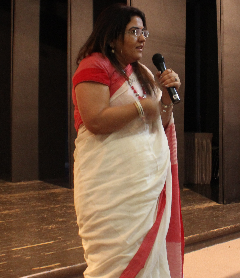
Dr. Kanan Khatau Chikal, a motivational speaker, psychologist, and homeopathic doctor organized an interactive session with the survivors. To set the tone of her session, she began with a quote by a famous poet that said, “And the time had come when the pain it took to remain closed in a tight bud was far greater than the pain it took to break open.” She went on to ask the audience about how many of them have lost someone, how many of them are still in a tight bud in pain, and how many of them are moving towards breaking open.
She spoke about how surviving families have ‘unfinished business’ towards their loved one and
encouraged them to express what was unsaid or undone, because keeping all of it within leads
to bottled up anger. “Anger is like garbage, it’s toxic, it builds up inside you, it smells. And what do we like to do with garbage? We throw it.” She explained to the audience about how many people cope with this anger either by projecting it onto other people around them or directing inwards which then leads to depression. “There is sadness and anger because there is unfinished business, there’s an emptiness, there’s a void, and that puts you in a shell.”
“Our issue is not with death”, Dr. Kanan shared, “but our issue is that they have left an
emptiness within us. Our issue is with ourselves, our issue is with the void that they
have left us with.”
Arranging the survivors in pairs, she guided them to access their emotions related to the loss and channelize those difficult feelings in a meditative exercise. The participants got the opportunity to not only share their own pain but also hold space for someone else’s pain during the activity. Some participants shared their thoughts after the activity:
- “I feel like that void is gone, which was always there since the person left me. It’s slowly filling up. I don’t think I need that person’s memories to fill this void, I can do it by myself.”
- “The process brought about a tremendous sense of peace and has reinforced a huge sense of connectedness to the universe. It has helped me realize that the loss is not really a loss.
- “I felt home after a long time, I smiled after the entire process.”
- “When the process started, I was shaking. Since the loss happened very recently..So I was nervous and shaking, thinking how I will go about this process. But as we were taking it step by step, by now I feel free. I feel better, emotionally strong. I wasn’t able to speak much before about this, but tonight I know I will sleep like a baby.”
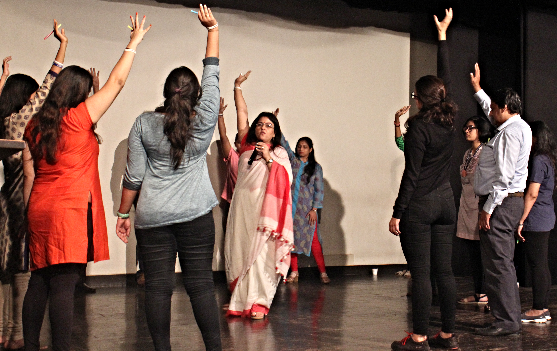
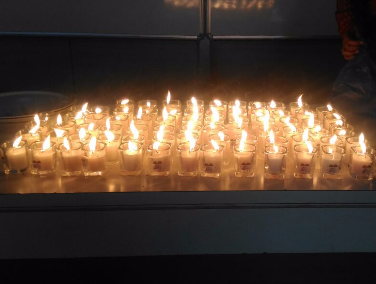
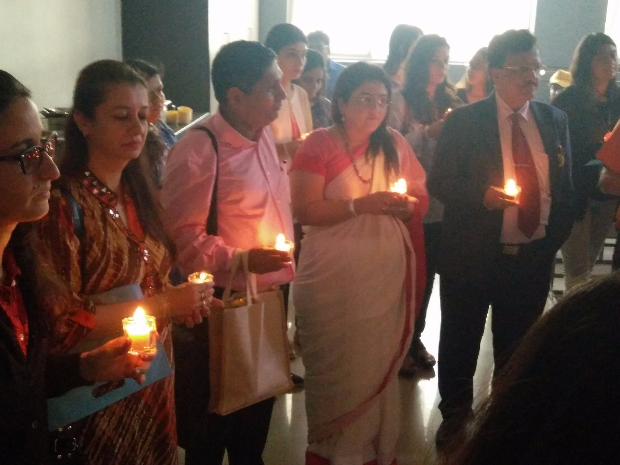
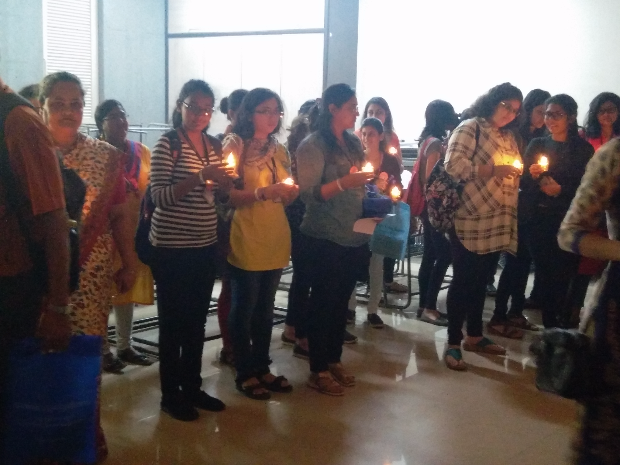
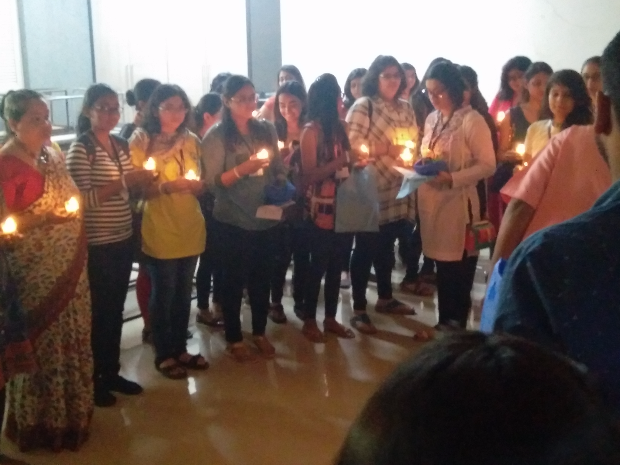
The event concluded with a short ceremony of lighting candles in memory of all those who lost their lives to suicide and a pledge to raise more awareness on suicide prevention. This was followed by lunch, Fun activities and personal interactions.

Sisters living works is a 501(c)3 nonprofit organization dedicated to suicide prevention among women in India.
© Copyright 2017 Sisters Living Works.
Developed By Risevertise Media
